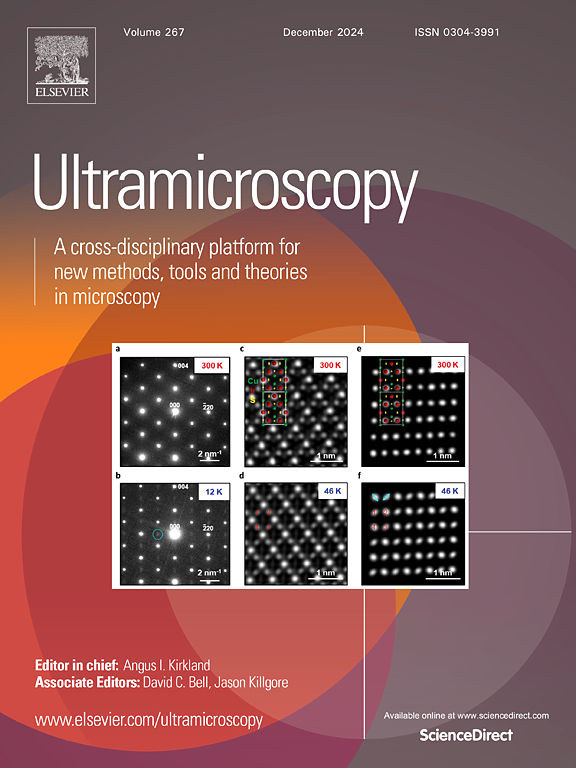A simple circularity-based approach for nanoparticle size histograms beyond the spherical approximation
IF 2
3区 工程技术
Q2 MICROSCOPY
引用次数: 0
Abstract
Conventional Transmission Electron Microscopy (TEM) is widely used for routine characterization of the size and shape of an assembly of (nano)particles. While the most basic approach only uses the projected area of each particle to infer its size (the “circular equivalent diameter” corresponding to the so-called “spherical approximation”), other shape descriptors can be determined and used for more elaborate analyses. In this article we present a generic model of particles, considered to be made of a few individual grains, and show how the equivalent size (i.e. a particle volume information) can be reliably deduced using only two basic parameters: the projected area and the perimeter of a particle. We compare this simple model to the spherical and ellipsoidal approximations and discuss its benefits. Then, partial coalescence of grains in a particle is also considered and we show how a simple analytical approximation, based on the circularity parameter of each particle, can improve the experimental determination of a particle size histogram. The analysis of experimental observations on nanoparticles assemblies obtained by mass-selected cluster deposition is presented, to illustrate the efficiency of the proposed approach for the determination of particle size just from conventional TEM images. We show how the presence of multimers offers an excellent opportunity to validate our improved and simple procedure. In addition, since the circularity plays a central role in this approach, attention is attracted on the perimeter determination in a pixelated image.
超越球面近似的基于圆度的纳米粒子尺寸直方图简单方法。
传统的透射电子显微镜(TEM)被广泛用于对(纳米)颗粒组件的尺寸和形状进行常规表征。虽然最基本的方法只是利用每个颗粒的投影面积来推断其大小(即所谓 "球面近似 "的 "圆形等效直径"),但也可以确定其他形状描述符,并用于更精细的分析。在这篇文章中,我们提出了一个通用的颗粒模型,认为它是由一些单独的颗粒组成的,并展示了如何仅使用两个基本参数就能可靠地推导出等效尺寸(即颗粒体积信息):颗粒的投影面积和周长。我们将这一简单模型与球形和椭圆形近似模型进行了比较,并讨论了其优点。然后,我们还考虑了颗粒中颗粒的部分凝聚,并展示了基于每个颗粒的圆度参数的简单分析近似值如何改进粒度直方图的实验测定。我们介绍了对通过质量选择簇沉积获得的纳米粒子集合体的实验观察分析,以说明所提出的方法在仅从传统 TEM 图像确定粒度方面的效率。我们展示了多聚物的存在如何为验证我们改进的简单程序提供了绝佳的机会。此外,由于圆形在这种方法中起着核心作用,因此像素化图像中的周长测定也备受关注。
本文章由计算机程序翻译,如有差异,请以英文原文为准。
求助全文
约1分钟内获得全文
求助全文
来源期刊

Ultramicroscopy
工程技术-显微镜技术
CiteScore
4.60
自引率
13.60%
发文量
117
审稿时长
5.3 months
期刊介绍:
Ultramicroscopy is an established journal that provides a forum for the publication of original research papers, invited reviews and rapid communications. The scope of Ultramicroscopy is to describe advances in instrumentation, methods and theory related to all modes of microscopical imaging, diffraction and spectroscopy in the life and physical sciences.
 求助内容:
求助内容: 应助结果提醒方式:
应助结果提醒方式:


